World nuclear parity cannot be violated? Must not be broken
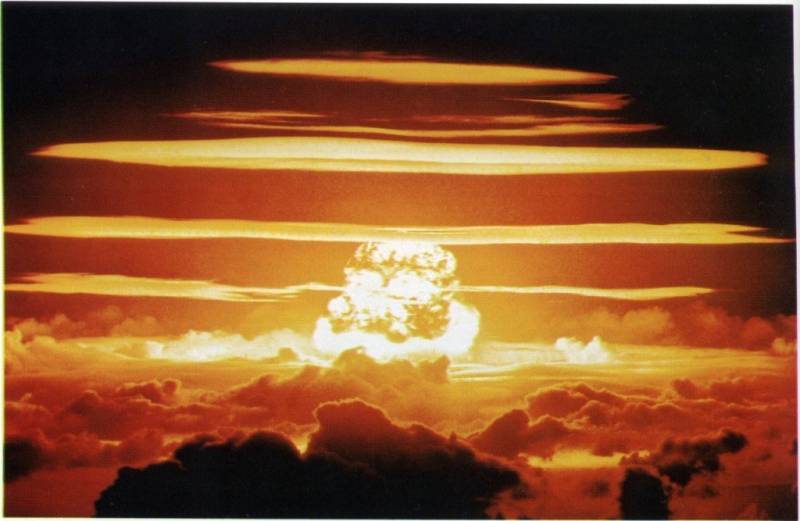
The Russian Federation is suspending its participation in the Treaty on Measures for the Further Reduction and Limitation of Strategic Offensive Arms (START-3). If we talk about withdrawing from treaties related to the sphere of strategic weapons, then here we cannot keep up with the United States - they were the first to withdraw from the Anti-Ballistic Missile Treaty (ABM), the first to withdraw from the Treaty on the Elimination of Intermediate-Range Nuclear Forces (INF Treaty).
Russia was the first to withdraw from the much less significant open skies treaty, and now - the suspension of participation in the START treaty. So far, only a suspension, but who knows what will follow next. Do not forget about the preparations for the immediate conduct of nuclear tests weapons (NW) in the event that such tests are carried out by Western countries.
In his message to the Federal Assembly, President of the Russian Federation Vladimir Putin raised the issue of the inadmissibility of a unilateral violation of nuclear parity by Western countries. There is no doubt that the US and Western countries are keen to tip the balance in their favor. There is no doubt that, having gained unilateral superiority, the countries of the West will definitely use it, and then - woe to the vanquished, that is, Russia.
How can nuclear parity be violated?
Formally, it is believed that nuclear parity is when we and the United States have approximately the same number of carriers and nuclear warheads deployed on them. It is these indicators that are reflected in the START treaties. However, in reality, nuclear parity is affected not only by the number of nuclear weapons on both sides.
For example, can we assume that we have parity with the United States in nuclear weapons, given that their population is twice as large? For example, in the event of an exchange of nuclear strikes, who will suffer the most losses? Will they be unacceptable to the US? And for us? If now the United States considers the damage that the Russian nuclear arsenal can inflict on them, will they consider it as such tomorrow? You never know what kind of shocks they will have, it is possible that "a treacherous nuclear strike by Russia" will be the lesser of evils for them?
In the late 80s, the USSR had about 40 (!) nuclear warheads, while the United States had about 000: it was possible to work with such figures. Certainly not the end of the world, but a guaranteed end to the United States as a developed state, it is quite realistic to provide forty thousand nuclear warheads. And the United States understood this very well, not in vain, having not received what they wanted from the Star Wars program, they rushed so briskly to sign the START-1 treaty in 1991.

Dynamics of changes in the number of nuclear warheads in the leading countries of the world
If we talk about the current state of the strategic nuclear forces of the Russian Federation, then everything is much more complicated. Now the US is not ready to take on a full-fledged blow with all the forces of strategic deterrence that Russia has, but there are several factors playing against us.
The first factor is that the United States is actively working on the issues of delivering a surprise disarming strike on the strategic nuclear forces of the Russian Federation, after which we will have nothing to answer, or the answer will be too weak, rather even acceptable for the United States, to justify everything that they will then do with Russia. Previously, the existing Russian components of the strategic nuclear forces, their potential vulnerabilities and the means being developed by the United States for delivering a surprise disarming strike were considered:
- Air and ground components of strategic nuclear forces;
- Marine component of strategic nuclear forces;
- Ground and space echelons of early warning systems;
- US decapitating weapon.
To summarize the conclusions, aviation the strategic nuclear forces component is currently not at all a deterrent against a sudden disarming strike - it is a purely offensive weapon, the marine component is extremely vulnerable, especially those strategic missile carriers that are in bases, and the ground component in terms of mobile missile systems is gradually losing its main feature - stealth .
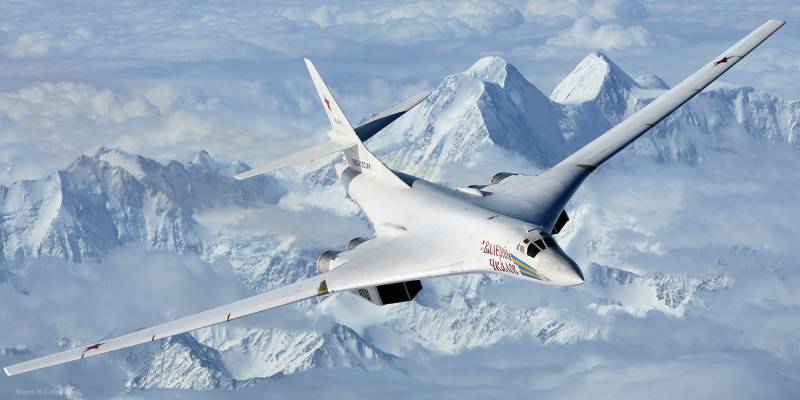
Strategic bomber bomber Tu-160
In addition, the impact of the remnants of Russian strategic nuclear forces after the United States launched a surprise disarming strike can be partially leveled by the US missile defense system.
About the United States - this is the second factor, much less significant than the first, since so far the US missile defense system has not shown itself in any way, and it is difficult to talk about its effectiveness, but nevertheless, everything can change if the United States gets access to space at reduced prices, and this is quite realistic if Elon Musk will still launch his fully reusable Starship space system with the declared characteristics. The origin, evolution and prospects of US missile defense were previously considered in the materials:
- Cold War missile defense and "Star Wars";
- US missile defense: present and near future;
- US missile defense post 2030: intercept thousands of warheads.
In short, the United States failed to create a normal strategic missile defense system in the 1th century, their missile defense capabilities are now very limited, and the prospects still have to live up to them. Literally. However, even the limited capabilities of US missile defense can play an important role in the event that the US successfully implements factor No. XNUMX - inflicting a successful surprise disarming strike on Russian strategic nuclear forces, especially in the context of the third factor.
The third factor is the potential deterioration of the economic and geopolitical situation in the United States itself, as a result of which even a nuclear war may cease to be an unacceptable way out of the situation for the American elites.
How can Russia maintain nuclear parity with the US?
It is necessary to start with ensuring the guaranteed survival of Russian strategic nuclear forces in the event of a sudden disarming strike by the enemy without taking into account the possibility of delivering a retaliatory strike.
Possible ways of evolution of Russian strategic nuclear forces were previously considered in the materials:
- prospects for the development of the ground component of the strategic nuclear forces of the Russian Federation;
- prospects for the development of the aviation component of the strategic nuclear forces of the Russian Federation;
- prospects for the development of the marine component of the strategic nuclear forces of the Russian Federation;
- generalized composition of the strategic nuclear forces of the Russian Federation in the medium term.
Understanding the vulnerability of Russian strategic nuclear forces to a sudden disarming strike by the enemy is based on the following theses:
- protected silo launchers (silos) - this is the only way to deploy intercontinental ballistic missiles (ICBMs) with nuclear warheads, in which their defeat is possible only with nuclear weapons, protected silos are invulnerable to conventional weapons - namely the understanding of this simple fact forces the United States to keep its ICBMs in protected silos on the American continent, and this despite the fact that their fleet is superior in total combat power to the fleets of all other countries combined, and it is certainly capable of ensuring the safety of their submarine missile carriers, which are an ideal weapon just for delivering a sudden disarming strike from a minimum distance, along a flat trajectory SLBM flight;
- any mobile carriers with ICBMs, including mobile ground-based missile systems (PGRK), combat railway missile systems (BZHRK), strategic missile submarines (SSBNs) with ballistic missile submarines (SLBMs) will be tracked by the enemy with increasing probability and can be destroyed on the routes of movement.
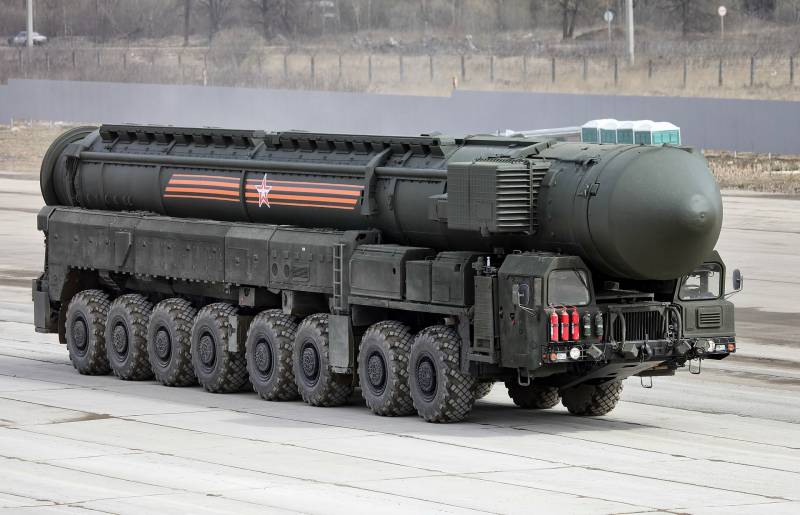
PGRK "Yars"
- The same mobile carriers in their bases represent an ideal target for the enemy, which can be hit by both conventional weapons and a small number of nuclear charges (this also includes the aviation component of strategic nuclear forces);
- the more nuclear warheads are placed on one ICBM, the more attractive it is for the enemy.
Based on the foregoing, an approximate calculation was made of how many nuclear charges does the US need to destroy Russian strategic nuclear forces.
Presumably, to destroy all Russian strategic nuclear forces, the United States should spend about 500-600 nuclear warheads out of 1 operationally deployed, plus a certain amount of precision-guided weapons. This number of nuclear warheads can be deployed on three or four Ohio-class SSBNs. The minimum launch range of the Trident II (D550) SLBM is 5 kilometers or 2 minutes of flying time. To increase launch density, the United States can use eight SSBNs in combination with advanced hypersonic high-precision missiles launched from Virginia Block V multipurpose nuclear submarines, surface ships, strategic aircraft and ground launchers.
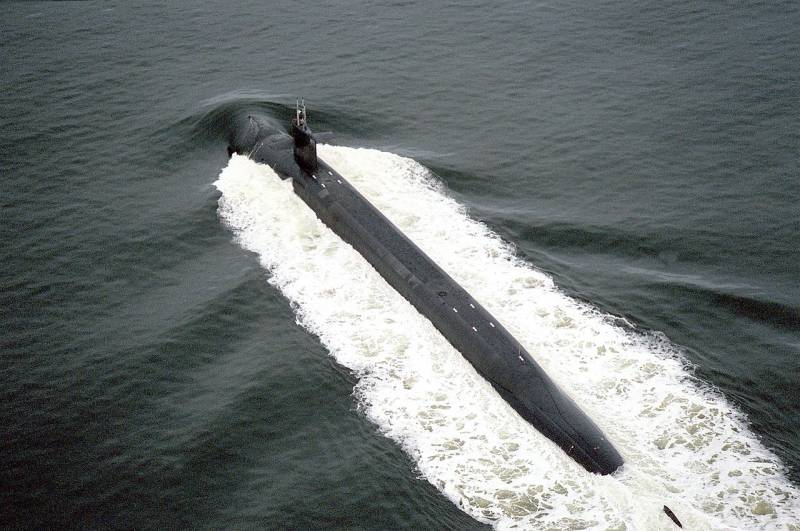
Ohio type SSBN
At this moment, opponents usually make the claim that the launch of American missiles will be detected in a timely manner by Russian missile attack warning systems, after which an order will be immediately given to Russian strategic nuclear forces to strike at the United States and NATO countries. In the case of a timely passage of all teams, the strike will be reciprocal, that is, enemy warheads will hit the empty mines, PGRKs and SSBNs.
If the enemy had struck from the maximum distance, with an ICBM flight time of about 30 minutes, then it would have been so, but 5,5 minutes? The chances of inflicting a retaliatory strike in such a short time are minimal, that is, the strike can only be a retaliatory strike, and only what we have left after the enemy's strike.
The evolution of Russian strategic nuclear forces
At the initial stage, it is necessary to maximize the resistance of the existing components of the strategic nuclear forces to the infliction of a sudden disarming strike by the enemy.
About strategic nuclear forces component we have already said that its role in strategic deterrence is minimal, it is a flexible weapon of attack, a kind of nuclear rapier.
Marine component of strategic nuclear forces, i.e. SSBN. In it, in the construction of the SSBN project 955 (955A) Borey and the Bulava SLBM for them, Russia has invested huge amounts of money. It is clear that it is necessary to maximize their security with the help of surface fleet, stationary and deployable means of illuminating the underwater situation, use anti-submarine aviation and multi-purpose submarines to cover them, but these measures cannot be called sufficient, and therefore it is necessary:
- to maximize the operational voltage coefficient (KOH), so that SSBNs spend a minimum of time in their bases, where they are most vulnerable - that is, increase the speed and quality of maintenance, improve equipment reliability, have two interchangeable crews per SSBN;
- provide SSBNs with the ability to fight off the enemy’s first strike by equipping them with highly effective decoys, anti-torpedoes and active anti-torpedo protection systems (we previously spoke about the possibility, prospects and consequences of creating the PTZ spacecraft in the materials "Octopus" - a complex of active anti-torpedo protection " и "Forcing the United States to abandon a surprise disarming strike").
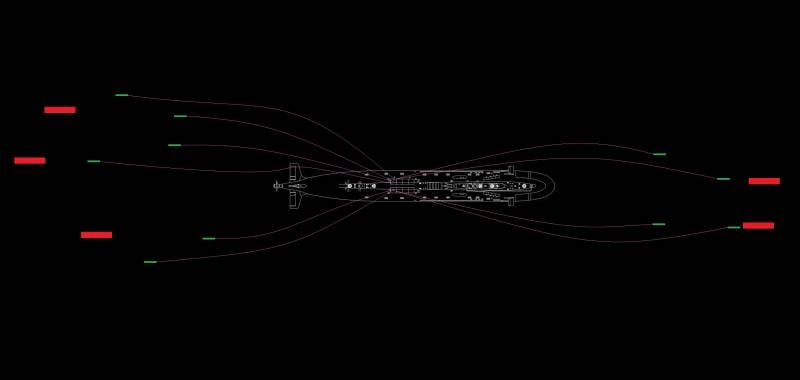
The concept of using the complex of active anti-torpedo protection (KA PTZ) "Octopus"
The presence on the SSBNs of a layered anti-torpedo defense system (ATD) by the mere fact of its existence can force the enemy to refuse to deliver a sudden disarming strike on our country.
It is also necessary to carefully analyze the feasibility of creating specific systems such as the Poseidon nuclear torpedo, if this complex is still operational and effective, then its carriers should also be equipped with layered anti-tank weapons.
In part ground component of strategic nuclear forces you must:
- stop all development of promising PGRK and BZHRK and / or reorient them to the role carriers of conventional high-precision long-range weapons ;
- to maximize the operating voltage coefficient for existing PGRKs up to the complete exhaustion of their resource and decommissioning;
- to limit the number of heavy ICBMs of the "Sarmat" type to a minimum level (no more than ten units);
- focus on the production of light silo-based ICBMs;
- maintain, restore and modernize the maximum number of silos manufactured in previous periods;
- to arrange the production of high-factory silos.
The subsequent evolution of Russian strategic nuclear forces should take place in this direction, with a gradual increase in the proportion of ICBMs in protected silos of high factory readiness, with one or two nuclear warheads, with the possibility of installing a third or a set of missile defense breakthrough tools.
For one real silo, it is necessary to build one or two false ones - sometime it will be just an external similarity, sometime it will be a real silo, which will host its own missile defense systems or other critical elements of the strategic deterrence infrastructure. Promising Russian strategic nuclear forces should turn into "endless" fields of silos, placed in such a way that it would be impossible to hit two silos with one enemy nuclear charge, and even one would not give a 100% probability of hitting ICBMs in silos so that the enemy had to spend at least two nuclear warheads per silo.
Then, even after striking the Russian strategic nuclear forces with everything he has, even with a twofold superiority of the enemy in the number of deployed charges, from 25% to 50% of the Russian nuclear deterrence potential will survive. In a massive strike, some enemy nuclear charges will affect others, deflecting them from their intended targets, reducing the accuracy of their hit, as a result of which the probability of ICBM survival in mines will increase even more.
The withdrawal from the START treaties is extremely important, since it is possible to send the United States far and for a long time, with restrictions imposed on the maximum number of deployed nuclear warheads and their carriers, and with all kinds of checks of Russian nuclear arsenals.
The exchange of data on ICBM launches is quite enough, after all, China does not tell anyone about its strategic nuclear forces, and nothing, a nuclear war did not start from this.
But the United States can build more ICBMs with nuclear warheads than we can?
They can, but not so much more - their nuclear technologies are less efficient than ours, one enrichment by the gas diffusion method is worth something, and it's not so important. The USSR had more nuclear warheads than the US, did it help us a lot or hurt the US?
For us, only one criterion matters - the ability of Russia to inflict unacceptable losses on the United States, and more precisely, not on the United States, but on the interests of those elites who can / will decide on a nuclear strike.
Thus, the size of the Russian arsenal of strategic nuclear forces should be determined by its ability to inflict unacceptable losses on Western elites even if they launch a sudden disarming strike on Russia.
So, after all, “guns instead of butter”? Will it take a lot of rockets?
Far from a fact. Of all the means of nuclear deterrence, ICBMs in silos should be the most economical, the main costs for them are only in the manufacture.
Strategic aviation - both the bombers themselves and the cost of their flight cost a lot of money. Submarine missile carriers - huge costs for construction, life cycle support, infrastructure, ensuring safe deployment. The situation is similar with PGRK and BZHRK - their operation is probably much more expensive than ICBMs in silos, which are “comfortably” resting in protected containers, waiting in the wings.
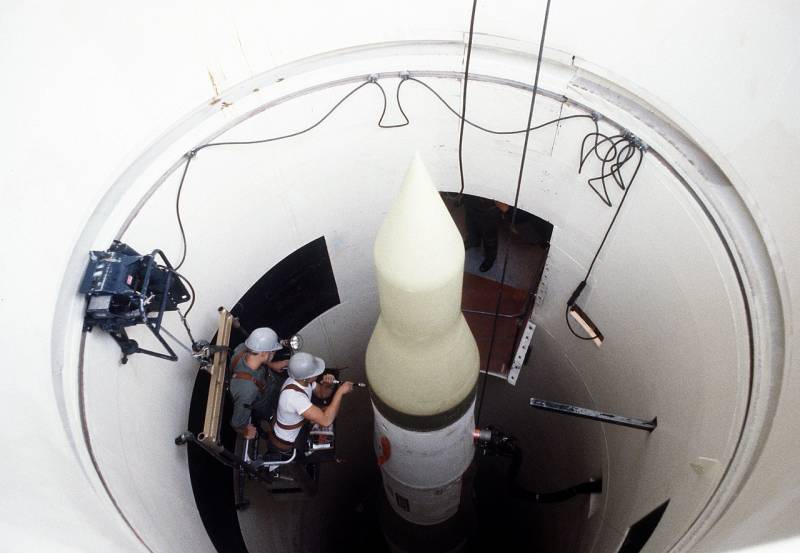
ICBMs in silos are maximally protected from all external influences
In this direction - reducing the cost of deployment and life cycle, increasing reliability and service life, ICBMs in silos should be developed.
For the carrier, these are not records of range, speed and carrying capacity, but a low life cycle cost, ease of maintenance, a huge warranty period, and built-in self-diagnostics. For a nuclear warhead, this is not maximum power and accuracy, but the ability to maintain operability for a long time without maintenance, minimizing the need for reassembly to clean the nuclear charge from accumulated decay products, and so on.
Isn't it dangerous to "put all your eggs in one basket"?
It is unlikely that in the foreseeable future something will appear that can radically change the situation - even the deployment of strike weapons in space in the medium term will not allow the enemy to launch a sudden disarming strike on all silos, too large forces will have to be concentrated in orbit - it will not be possible to do this quietly. So light ICBMs in protected silos will remain the most effective means of nuclear deterrence for a long time.
In addition, withdrawal from the START treaty will largely blur the difference between strategic and tactical nuclear weapons.
For example, in the future, instead of building new SSBNs, conventional multi-purpose nuclear submarines (ICNs) with universal weapons bays can be built, which can accommodate both conventional weapons, autonomous uninhabited underwater vehicles (AUVs), and promising hypersonic heirs of Zircon with nuclear warheads and range of two to three thousand kilometers.

Hypersonic missiles with nuclear warheads placed on multi-purpose submarines will put the strongest pressure on enemy defenses
Such a fleet will be active, aggressive, it will strive to get closer to the enemy at a range of destruction, and the enemy will have to think about protecting against a sudden strike, concentrating forces on defense, not attack.
The nuclear triad will remain in its current form - strategic missile forces (RVSN), aviation and navy. That's just the aviation and the navy, in fact, will not become a means of deterrence, but a means of attack, creating a threat, putting pressure on the enemy, that is, what they should be due to their highest mobility.
And the "endless" fields of silos with ICBMs, which will be impossible to destroy with a sudden disarming strike, will ensure the preservation of nuclear parity with the enemy.
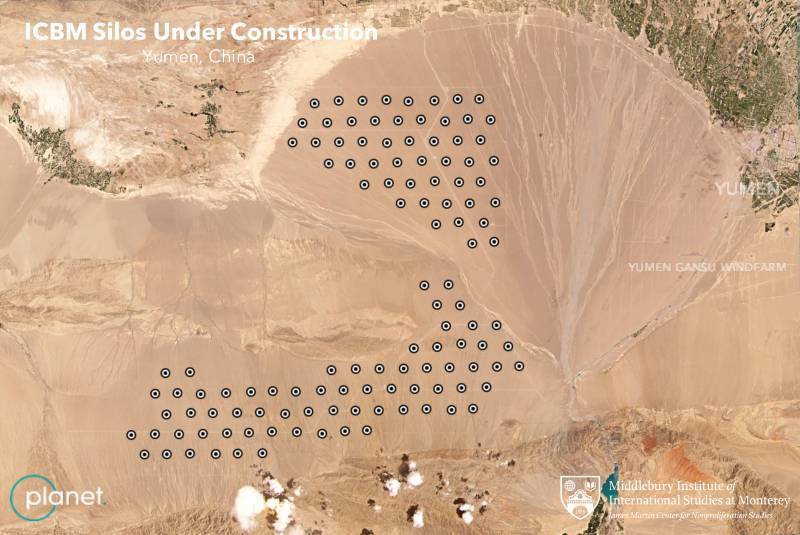
China is already building its "endless" silo fields with ICBMs
Conclusions
1. At present, in the short and medium term, the Russian strategic nuclear forces and the effectiveness of strategic deterrence will be influenced by the following factors:
1.1. A significant loss of stealth for all mobile objects (carriers), including SSBNs, PGRK and BZHRK, due to the progressive development of low-orbit constellations of intelligence, control and communications satellites, as well as the deployment of distributed intelligence networks, including autonomous surface and underwater uninhabited reconnaissance vehicles, combined with an increase in the number of high-precision long-range weapons in service with the enemy, including the possibility of in-flight retargeting, including hypersonic ones.
1.2. A gradual, evolutionary increase in the effectiveness of enemy anti-missile defense systems, whose effectiveness may become minimally sufficient to repel a Russian retaliatory strike in the event that the enemy launches a sudden disarming strike and destroys most of the Russian strategic nuclear forces.
1.3. The existing and progressive probability that the unacceptable damage potentially inflicted on the enemy by the strategic nuclear forces of the Russian Federation will become acceptable to him due to the growth of external, internal, economic and political problems, especially taking into account the real or imaginary possibility of destroying Russian strategic nuclear forces with a sudden disarming strike, followed by repelling single launches by the missile defense system .
2. In order to compensate for the negative impact of the above factors and maintain the strategic nuclear parity of the strategic nuclear forces of the Russian Federation, it is necessary:
2.1. Place nuclear charge carriers (ICBMs) in protected silos, excluding the possibility of their destruction by any long-range conventional munitions, as well as nuclear charges with low hit accuracy.
2.2. Ensure that silos are placed in such a way as to exclude the simultaneous destruction of two silos by one enemy nuclear charge.
2.3. The number of nuclear warheads on an ICBM in a silo must be less than or equal to the number of nuclear warheads that the enemy must spend to destroy one silo (1-2 warheads with the possibility of installing a third).
2.4. Widespread use of false silos, imitation of the silo headband, loading ICBMs into silos under the cover of mobile shelters, excluding the enemy’s understanding in which silos the ICBMs are installed, in which not, exclude any checks of the silos by the enemy: leave only mutual notifications of ICBM launches from the means of control .
2.5. To ensure high-volume production of ICBMs and silos of high factory readiness, with the main criteria - ensuring the maximum possible service life, the highest possible reliability, and minimizing the cost of the life cycle of products.
Information